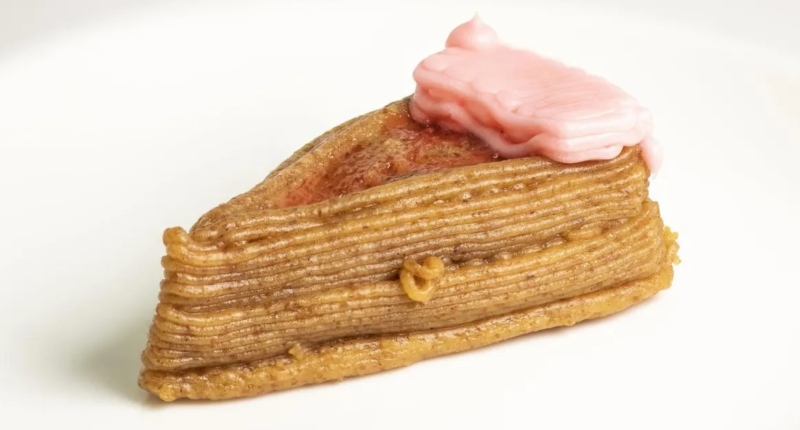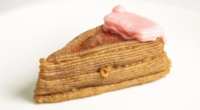Scientists have successfully 3D-printed and laser-baked a seven-ingredient cheesecake, which provides users greater control over the nutrition of their meals, reduces the risk of food-borne illness, and cuts down on costs. The food printer designed by the researchers functions like an ordinary 3D printer, except it comes equipped with a laser for baking and extrudes blobs of peanut butter and fruit puree instead of molten plastic. The machine’s software is its most innovative feature, creating a program that can follow complex recipes and move the robot in precise, intricate patterns. The printer can only work if all the ingredients are in the form of a paste that can be squeezed through the printer. The technology may become a staple home and industrial cooking device as it rapidly develops. The printer can also reduce food waste as users would only be printing ingredients they intend to consume. Lasers are an ideal solution for 3D food printing due to their high level of control and precise targeting.
Will 3D-printed Cheesecake be the Future of Food?
Scientists have successfully 3D-printed and laser-baked a seven-ingredient cheesecake, according to a study published in the journal Nature. This technology allows users greater control over the nutrition of their meals, reduces the risk of food-borne illness, and cuts down on costs. Jonathan Blutinger, the study’s lead author and a robotics engineer from Columbia University’s Creative Machines Lab, stated that the process brings the user closer to the food, allowing them to control all the base elements.
The food printer his team designed functions like an ordinary 3D printer, equipped with a laser for baking and extruding blobs of peanut butter and fruit puree. The machine’s software is its most innovative feature, creating a program that can follow complex recipes and move the robot in precise, intricate patterns.
However, food-printing isn’t without its limitations. For the printer to work, all the ingredients must be in the form of a paste that can be squeezed through the printer. Cheesecake, for example, requires graham cracker paste, peanut butter, cake frosting, Nutella, banana puree, strawberry jam, and cherry drizzle.
Creating a structurally-sound cheesecake from paste comes with unique difficulties. It took Blutinger’s team at least six different attempts to get the process right, building the cake like a house, first creating compartments from harder or more viscous ingredients to support the softer paste within.
Blutinger said his team is also working on making their printer compatible with powders and liquid sprays. For now, anything that can be put into a paste or a liquid can be printed.
In conclusion, this 3D-printing technology provides several benefits to the user. The user can control all the base elements of their meals, which can lead to healthier eating habits. The printer also reduces the risk of food-borne illness and cuts down on costs. However, it is important to note that the technology has limitations, and not all ingredients can be used in the printer.
3D-Printed Cheesecake and Its Future Impact on the Food Industry
Scientists have successfully 3D-printed a seven-ingredient cheesecake, and it tasted unlike any conventional cheesecake. The flavors hit the mouth in different ways due to the different compartments within the structure. The technology provides finer control over the distribution of ingredients and can reduce food waste, as users would only print the ingredients they intend to consume.
While other companies have debuted food-printing technology, Blutinger’s printer stands out because it can cook the food it produces using a laser, making it a big step forward for 3D food printing. Lasers are an ideal solution due to their high level of control and precise targeting.
As the technology develops, Blutinger’s team believes that the 3D printer may become a staple home and industrial cooking device. This technology has already started to impact high-end restaurants, including Food Ink in the UK, Mélisse Restaurant in Santa Monica, La Enoteca, and La Boscana in Spain.
Blutinger hopes that his research inspires more people to invest in the technology. Software has not yet touched food in a big way, but Blutinger believes that when software touches an industry, there is no turning back.
In conclusion, 3D food printing technology provides finer control over the distribution of ingredients and reduces food waste. Blutinger’s 3D printer stands out from other food printing technology because it can also cook the food it produces using a laser. As the technology continues to develop, it may become a staple home and industrial cooking device.
Don’t miss interesting posts on Famousbio










